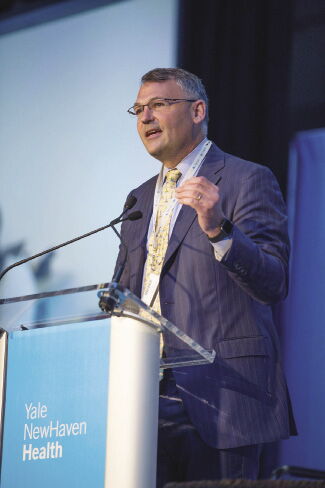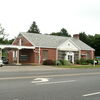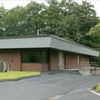Processing Your Payment
Please do not leave this page until complete. This can take a few moments.
-
News
-
Editions
-
- Lists
-
Viewpoints
-
HBJ Events
-
Event Info
- 2024 Economic Outlook Webinar Presented by: NBT Bank
- Best Places to Work in Connecticut 2024
- Top 25 Women In Business Awards 2024
- Connecticut's Family Business Awards 2024
- What's Your Story? A Small Business Giveaway 2024 Presented By: Torrington Savings Bank
- 40 Under Forty Awards 2024
- C-Suite and Lifetime Achievement Awards 2024
- Connecticut's Health Care Heroes Awards 2024
-
-
Business Calendar
-
Custom Content
- News
-
Editions
View Digital Editions
Biweekly Issues
- April 15, 2024
- April 1, 2024
- March 18, 2024
- March 4, 2024
- February 19, 2024
- February 5, 2024
- January 22, 2024
- January 8, 2024
- Dec. 11, 2023
- + More
Special Editions
- Lists
- Viewpoints
-
HBJ Events
Event Info
- View all Events
- 2024 Economic Outlook Webinar Presented by: NBT Bank
- Best Places to Work in Connecticut 2024
- Top 25 Women In Business Awards 2024
- Connecticut's Family Business Awards 2024
- What's Your Story? A Small Business Giveaway 2024 Presented By: Torrington Savings Bank
- 40 Under Forty Awards 2024
- C-Suite and Lifetime Achievement Awards 2024
- Connecticut's Health Care Heroes Awards 2024
Award Honorees
- Business Calendar
- Custom Content
Yale New Haven Health System President Christopher O’Connor looks to the future
 PHOTO | CONTRIBUTED
Christopher O'Connor, CEO Yale New Haven Health
PHOTO | CONTRIBUTED
Christopher O'Connor, CEO Yale New Haven Health
Christopher O’Connor took over the role of president of the Yale New Haven Health system on Oct. 5. The system includes Yale New Haven Hospital, Bridgeport Hospital, Greenwich Hospital, Lawrence + Memorial Hospital in New London, and Westerly Hospital in Rhode Island.
O’Connor most recently served as the system’s executive vice president and chief operating officer, a role he had since 2012. Before that, he had been the president and chief executive officer of the Hospital of St. Raphael.
O’Connor has been heavily involved in the health system’s growth, including bringing Yale New Haven Hospital and the Hospital of St. Raphael together in 2012. He has led other growth initiatives, including the system’s affiliation with Lawrence + Memorial Hospital in 2016 and the acquisition of Milford Hospital by Bridgeport Hospital in 2019. The health system has future expansion plans in progress, including for a new $838-million, 505,000-square-foot neuroscience center at its St. Raphael campus.
In October, O’Connor spoke to New Haven Biz about the health system, pandemic, and what he hopes to accomplish in his new position.
How is the health system navigating the pandemic so far?
This has probably been one of the most challenging times for the health system. The initial impact of COVID-19 saw a tremendous surge in our patient volume and put a strain on our system. Now, we are living through the recovery challenges.
We are still not at our pre-COVID volumes. There is a hesitancy to return to the healthcare environment because of the risks that people perceive with going into a space where we are still caring for COVID patients.
We are still suffering financial losses at this point. It has been difficult for our staff, who have been working tirelessly. I am optimistic, but we are still in the middle of it, and there is still some road ahead for us to navigate.
When do you think patients will return for care at pre-pandemic levels?
Right now, it is variable across the system. It is variable by geography — it is different in Greenwich than it is in New London for instance. It is also different for the different services we have.
We are not at our pre-pandemic levels.
In some areas we have hit those thresholds, but overall we are probably about 85 to 90 percent to where we were in January. Barring any major COVID-19 surge, which obviously is the variable we are worried about, we are hoping we can achieve pre-pandemic levels in the next few months.
How do you plan to help the system through the economic challenges brought on by the pandemic?
There are two main focus areas. One is supporting that volume return. We are really focusing on ensuring our patients and staff are safe through this transition process, so folks know if they come to the hospital or any of our facilities, we are extraordinarily focused on cleanliness and protecting our patients and staff.
And the other one is — how do we manage expenses in a way that protects our people? We have made a statement to our employees that we are doing everything in our power to avoid furloughs and layoffs.
We have been able to reduce things like travel and discretionary spending. We have looked for other opportunities across the system: How do we deliver care more efficiently? Can we consolidate some areas to provide the same level of care, but potentially do it in fewer locations and more efficiently?
So those are things we are exploring as we head into our new fiscal year, which started Oct. 1.
How long do you predict it will take to recover?
By the third quarter of this fiscal year, we are expecting we will be back to profitability across the system, and that is starting April 1.
Are there any new revenue streams the hospital is considering in the months ahead?
A big revenue stream we have embarked upon isn’t one that frankly we are very excited about and that’s COVID testing. We have been a regional leader in testing. We are seeing additional revenues from that.
We also are seeing exceptional expenses. For instance, we don’t get reimbursed when we test everybody who is coming in for a procedure that is required to have a COVID test.
We are also testing outside folks who are paying so that is a new revenue stream. But largely, these are not new revenue streams, it is just ramping up to where our revenue was before the pandemic.
The health system has been growing in recent years, including merging with hospitals like the Hospital of St. Raphael. Will this growth and expansion continue?
Right now, we are focused on the entities we have. We have lost $450 million in this pandemic this past fiscal year. Luckily over $300 million was reimbursed — we had some benefit from the CARES Act.
But we still had to make up the additional $150 million or so in losses. But the gap is actually larger because we were predicting to make $200 million. So that is a $350-million swing roughly in our cash position.
So right now our goal is really to stabilize the entities that we have. We have added some homecare agencies recently to support the continuum of care, but right now we don’t have any hospitals or health system additions on our radar.
The new neuroscience center project has suffered delays due to the pandemic. What is the latest timeline?
We are still going to be investing dollars into that project. It’s just the speed at which we are going to be able to meet the schedule is going to slow down a little bit.
It’s probably a year to a two-year delay at this stage, but we are still in the midst of evaluating.
Once that project is finished, how will it complement what the health system already offers?
It is going to do a number of things, but we are actually looking at making some changes to it.
One of the things that we are currently considering is making more negative pressure rooms in that pavilion so they are all private rooms to begin with, which will be a big difference for us.
That from an infection control perspective is a big advantage. You don’t have to worry about sharing a room with another patient. We are looking at ways to improve that project that makes it pandemic ready.
We are looking to support the latest technologies that are available for the care of neurovascular conditions. Things like interventional radiology, where our neurosurgeons and radiologists can do high-end interventions that are minimally invasive using just needles that go through your arteries or veins to support the treatment of neurovascular disease.
How will the pandemic change the business of health care in the short term and long term?
In the short term, it is obviously focusing on the volume and ensuring that we can continue to deliver the best care possible for the patients.
In the long term, the next level of our concern is contributing to the vaccine distribution that is going to be around the corner, when the FDA determines a vaccine is safe and reliable.
Five years from now, what do you hope you will have accomplished?
I hope to have continued to develop the relationship with the school of medicine, returned the system to financial health, completed the neuroscience center, improved the efficiency of the health system, invested in our facilities, and helped the health system grow.

2022 Giving Guide
This special edition informs and connects businesses with nonprofit organizations that are aligned with what they care about. Each nonprofit profile provides a crisp snapshot of the organization’s mission, goals, area of service, giving and volunteer opportunities and board leadership.
Learn more
Subscribe
Hartford Business Journal provides the top coverage of news, trends, data, politics and personalities of the area’s business community. Get the news and information you need from the award-winning writers at HBJ. Don’t miss out - subscribe today.
Subscribe
2024 Book of Lists
Delivering Vital Marketplace Content and Context to Senior Decision Makers Throughout Greater Hartford and the State ... All Year Long!
Read Here-
2022 Giving Guide
This special edition informs and connects businesses with nonprofit organizations that are aligned with what they care about. Each nonprofit profile provides a crisp snapshot of the organization’s mission, goals, area of service, giving and volunteer opportunities and board leadership.
-
Subscribe
Hartford Business Journal provides the top coverage of news, trends, data, politics and personalities of the area’s business community. Get the news and information you need from the award-winning writers at HBJ. Don’t miss out - subscribe today.
-
2024 Book of Lists
Delivering Vital Marketplace Content and Context to Senior Decision Makers Throughout Greater Hartford and the State ... All Year Long!
ABOUT
ADVERTISE
NEW ENGLAND BUSINESS MEDIA SITES
No articles left
Get access now
In order to use this feature, we need some information from you. You can also login or register for a free account.
By clicking submit you are agreeing to our cookie usage and Privacy Policy
Already have an account? Login
Already have an account? Login
Want to create an account? Register
Get access now
In order to use this feature, we need some information from you. You can also login or register for a free account.
By clicking submit you are agreeing to our cookie usage and Privacy Policy
Already have an account? Login
Already have an account? Login
Want to create an account? Register






0 Comments